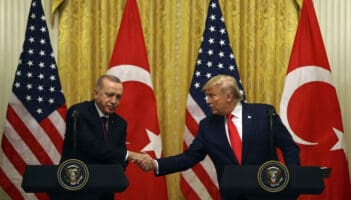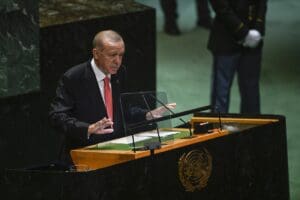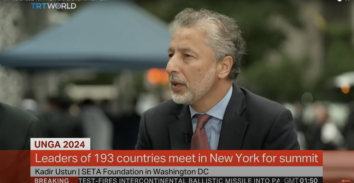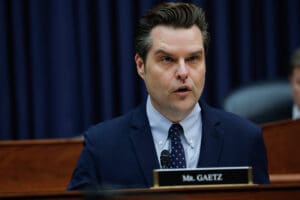US withdrawal from Syria: One for all or all for one?
In the recent past, the foreign policy decision-making mechanism in Washington, D.C. probably has never been this complicated. In the last week, following U.S. President Donald Trump’s statement that he is willing to withdraw U.S. forces from Syria, the complexity and confusion have reached a new height. Although President Trump had stated a similar form of words about the U.S.’ involvement in the Middle East and Syria, this time the aftermath of these words made things extra messy. Soon after his statement in Ohio, different agencies in Washington, D.C. started to think how to interpret this statement. The State Department spokesperson openly admitted that she was not aware of such a statement. Later it was revealed that President Trump told Saudi Crown Prince Mohammed bin Salman during their meetings that Saudis need to pay if they want the U.S. to stay. The commanders on the ground in Syria in a news report expressed their displeasure about the confusion from the statements of the White House. Following this, in the last few days there were multiple reports that depends on “reliable sources” and statements from the senior officials about the withdrawal of U.S. forces from Syria.
What is clear so far is there was an actual meeting in the National Security Council and President Trump has been expressing very openly his willingness to pull U.S. forces from Syria. However, after much discussion and debates with his staff he seems to be convinced to implement this policy after U.S. forces totally eradicate Daesh-held regions in Syria. At least this is what many people understand from conflicting and confusing statements from the last few days. The rest is unclear. This unclear part includes both a difficult set of questions in regard to the U.S.’ strategy in Syria and risks this confusion can bring for U.S. foreign policy and regional stability.
The ambiguity of the U.S.’s Syria policy generates many questions and concerns for all in the Middle East
First of all, there are so many questions about these statements. The disagreement between the White House and commanders of the U.S. forces on the ground is difficult to hide at this point. Even those who try to explain this by avoiding this discrepancy among the civilians and the military brings more complexity about the current state of civil-military relations in the U.S. It is of course ambivalent what the U.S. administrations and commanders on the ground are thinking about the future of Syria. If there will be a U.S. withdrawal and if the U.S. is not willing to think about the future of Syria at this point, it is not clear what the timetable will be for the withdrawal and it is not clear what the exit strategy will entail. For instance, how many U.S. forces will continue to stay in Syria and what kind of roles will these remaining units or soldiers play? Furthermore, what will happen to the bases that the U.S. built in the east of the Euphrates? Are they going to be transferred to the local forces or to another state? More importantly, what will happen to the People’s Protection Units (YPG) forces? Who will take back the weapons they possess right now and who will guarantee that they will not attack Turkey at this point?In the midst of all these questions, confusing statements from the U.S. administration also generate geopolitical repercussions in the region. First of all, these statements generate concern for the future of U.S. policy in the region. For countries like Saudi Arabia it will mean a further purchase of weapons and weapon systems which may generate an arms race on steroids in the region. The unclear statements about the U.S.’ withdrawal from the region can result in mixed signals for these countries. For other countries who cannot afford the same form of arms import, they may consider realignment options with other major powers. This time such a realignment in the Middle East can provoke the U.S. against other major powers and will result in aggressive foreign policy of the U.S. Of course, such a decision without any coordination with any allies in the region will generate a serious credibility problem for the U.S. in its future endeavors. The U.S. already generated a major trust problem with its allies because of the policies that it has followed for the last few years. This would increase this trust problem.
One more time, it is not clear what the final decision of the U.S. will be but as stated above, the lack of clarity is generating a lot of questions, concerns and at the same time risks for the region and U.S. foreign policy. Everybody nowadays hopes that with the new names, the U.S. may resolve this problem because the continuation of this confusion and chaos can bring about significant costs for everyone.
This article was first published by Daily Sabah on April 7, 2018.
























